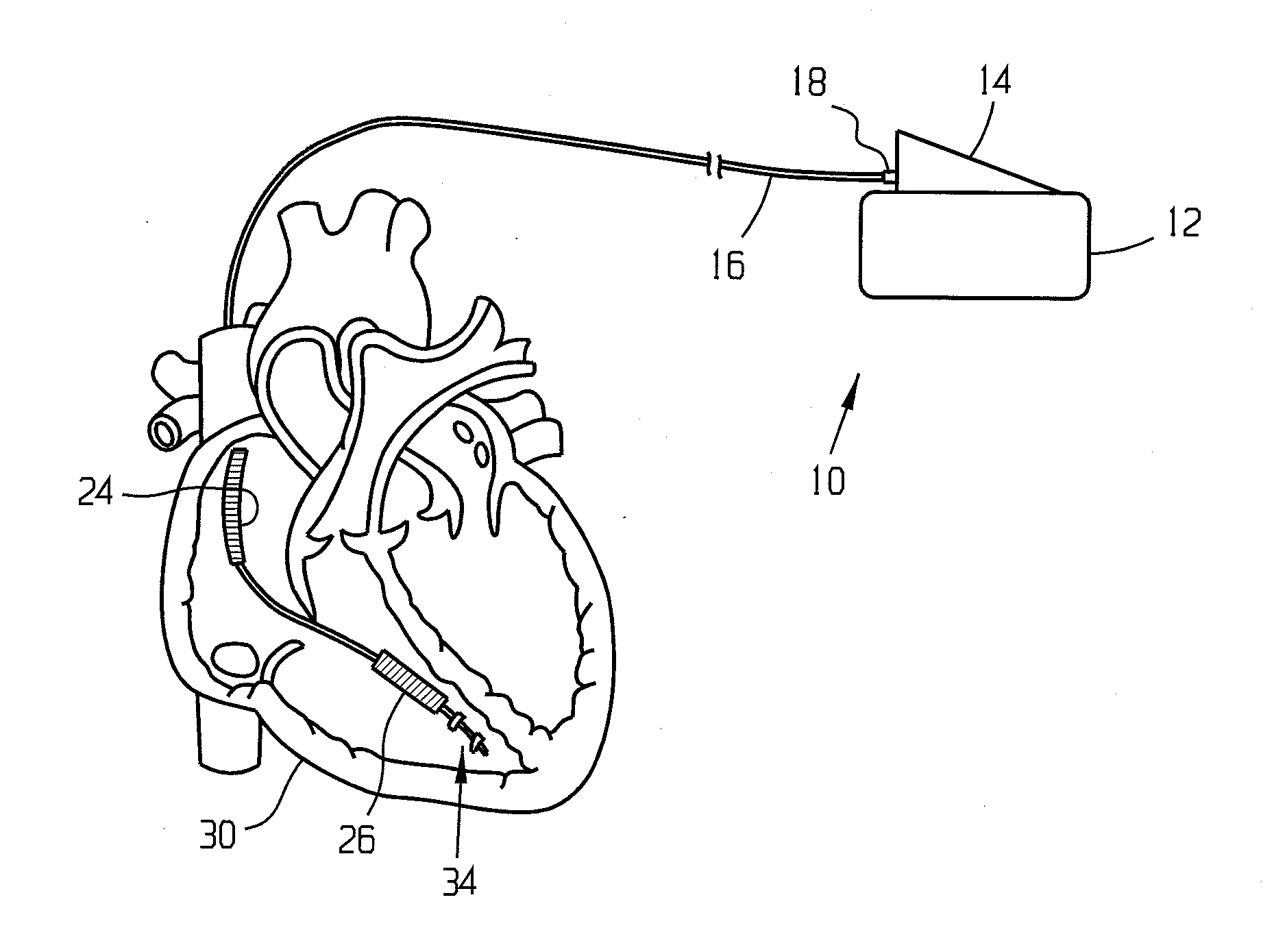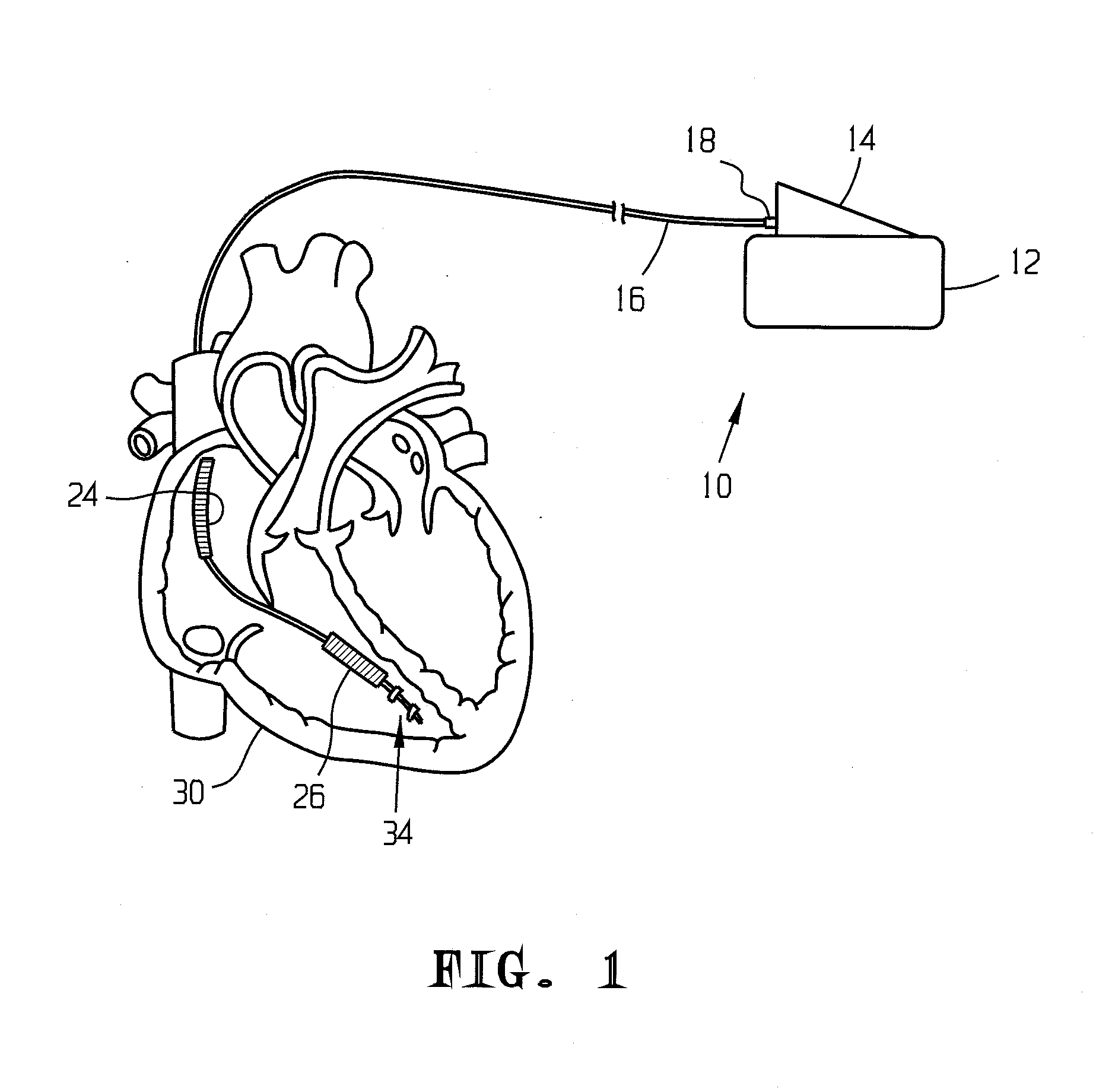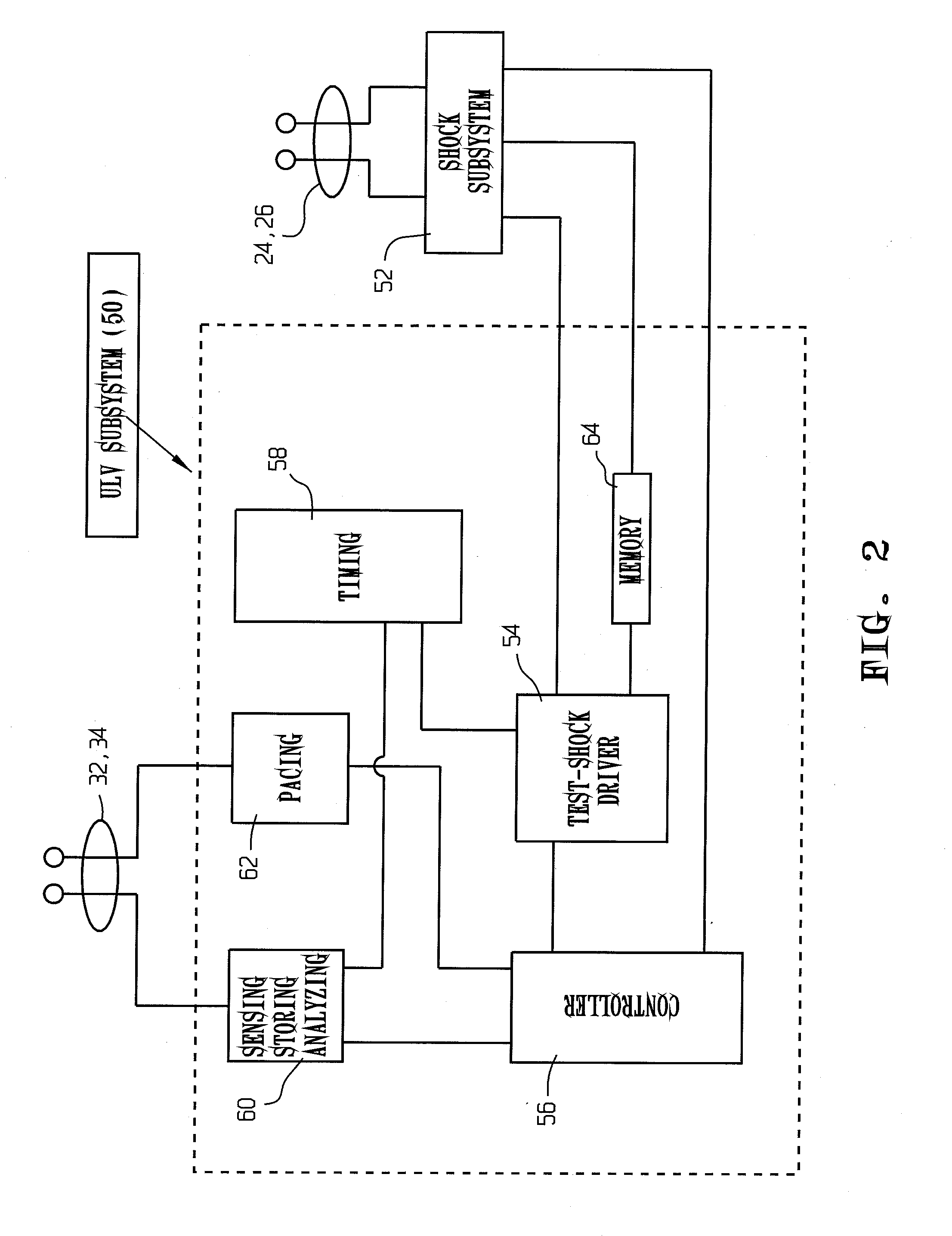Shock timing technology
a technology of shock timing and implantable cardioverter, which is applied in the direction of heart defibrillator, electrotherapy, therapy, etc., can solve the problems of inability to determine the complete probability of success the limitation of the electrical energy storage capacity of the icd, and the inability to test at the time of the implanted icd to determine the complete probability of success, etc., to achieve the effect of convenient, reliable, accurate and efficien
- Summary
- Abstract
- Description
- Claims
- Application Information
AI Technical Summary
Benefits of technology
Problems solved by technology
Method used
Image
Examples
Embodiment Construction
1. Basic Devices and Methods for Determining Defibrillation Shock Strength Utilizing Timed T-Wave Shocks
[0088]The Devices and Methods for Determining Defibrillation Shock Strength Utilizing Timed T-wave Shocks are particularly well suited for use with the Timing Systems, Devices and Method described in Section 2 below.
[0089]Referring to FIG. 1, an embodiment of the present invention is depicted as an ICD system 10 comprising an implantable electrical pulse generating housing or “can”12, an electrical connector pin housing 14, an implantable intravascular catheter 16 electrically connected to pin housing 14 via a pin connector 18. Catheter 16 carries proximal defibrillation discharge electrode 24 and distal defibrillation discharge electrode 26, electrodes 24 and 26 sometimes being referred to as “coils”, and is configured to position proximal electrode 24 within right atrium 28 and position distal electrode 26 within right ventricle 30. Catheter 16, also carries a set of pacing / sens...
PUM
 Login to View More
Login to View More Abstract
Description
Claims
Application Information
 Login to View More
Login to View More - R&D
- Intellectual Property
- Life Sciences
- Materials
- Tech Scout
- Unparalleled Data Quality
- Higher Quality Content
- 60% Fewer Hallucinations
Browse by: Latest US Patents, China's latest patents, Technical Efficacy Thesaurus, Application Domain, Technology Topic, Popular Technical Reports.
© 2025 PatSnap. All rights reserved.Legal|Privacy policy|Modern Slavery Act Transparency Statement|Sitemap|About US| Contact US: help@patsnap.com



